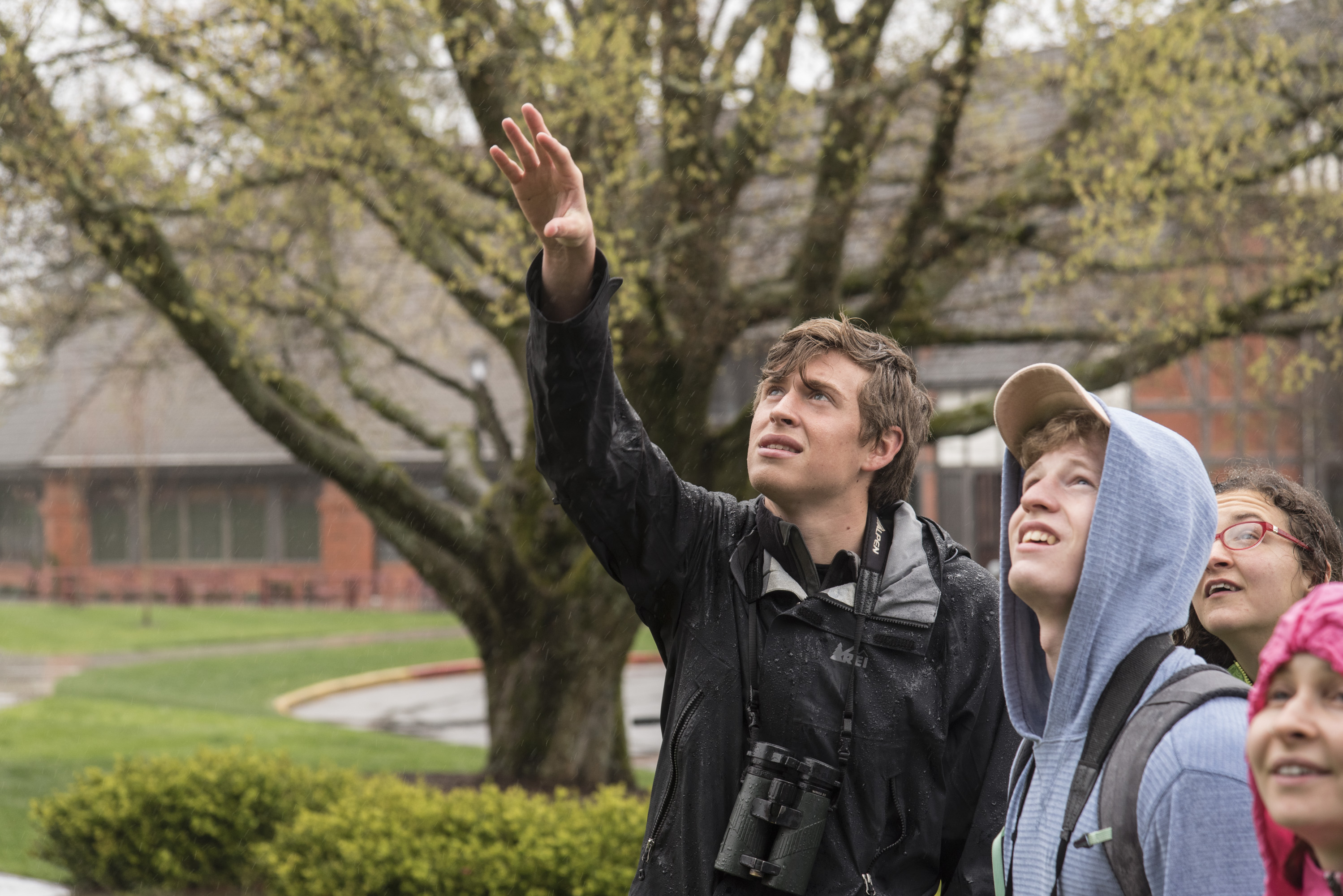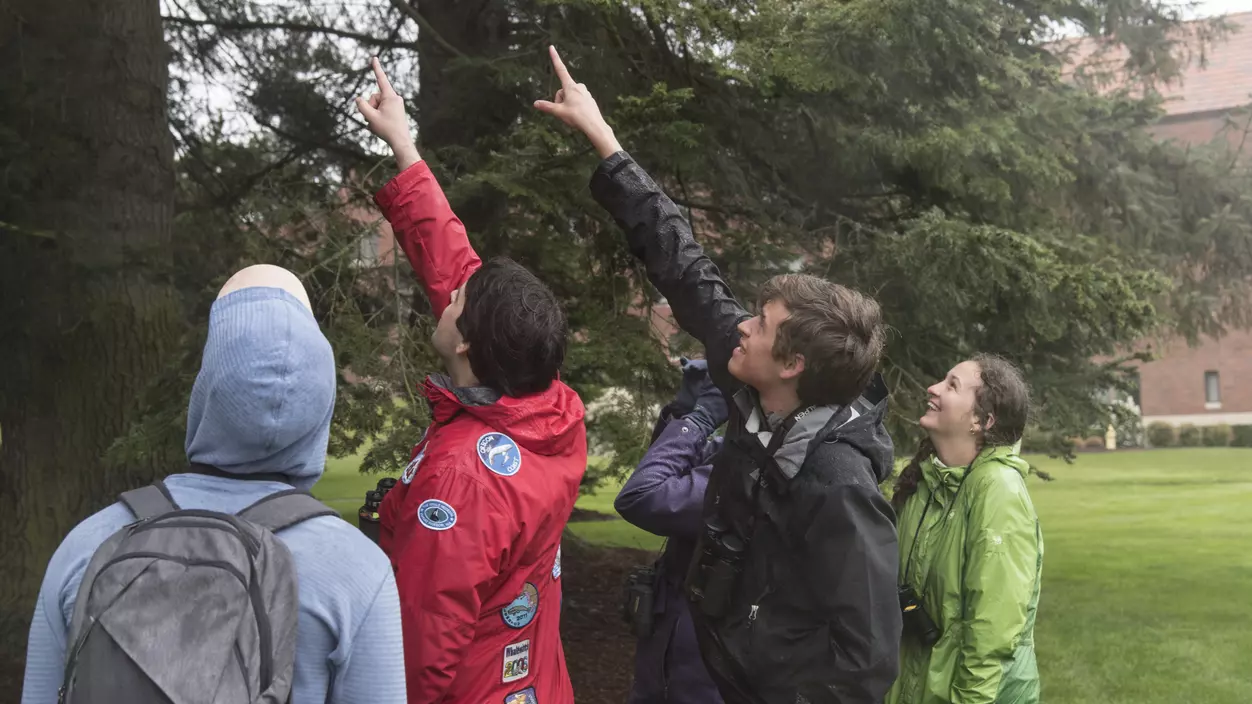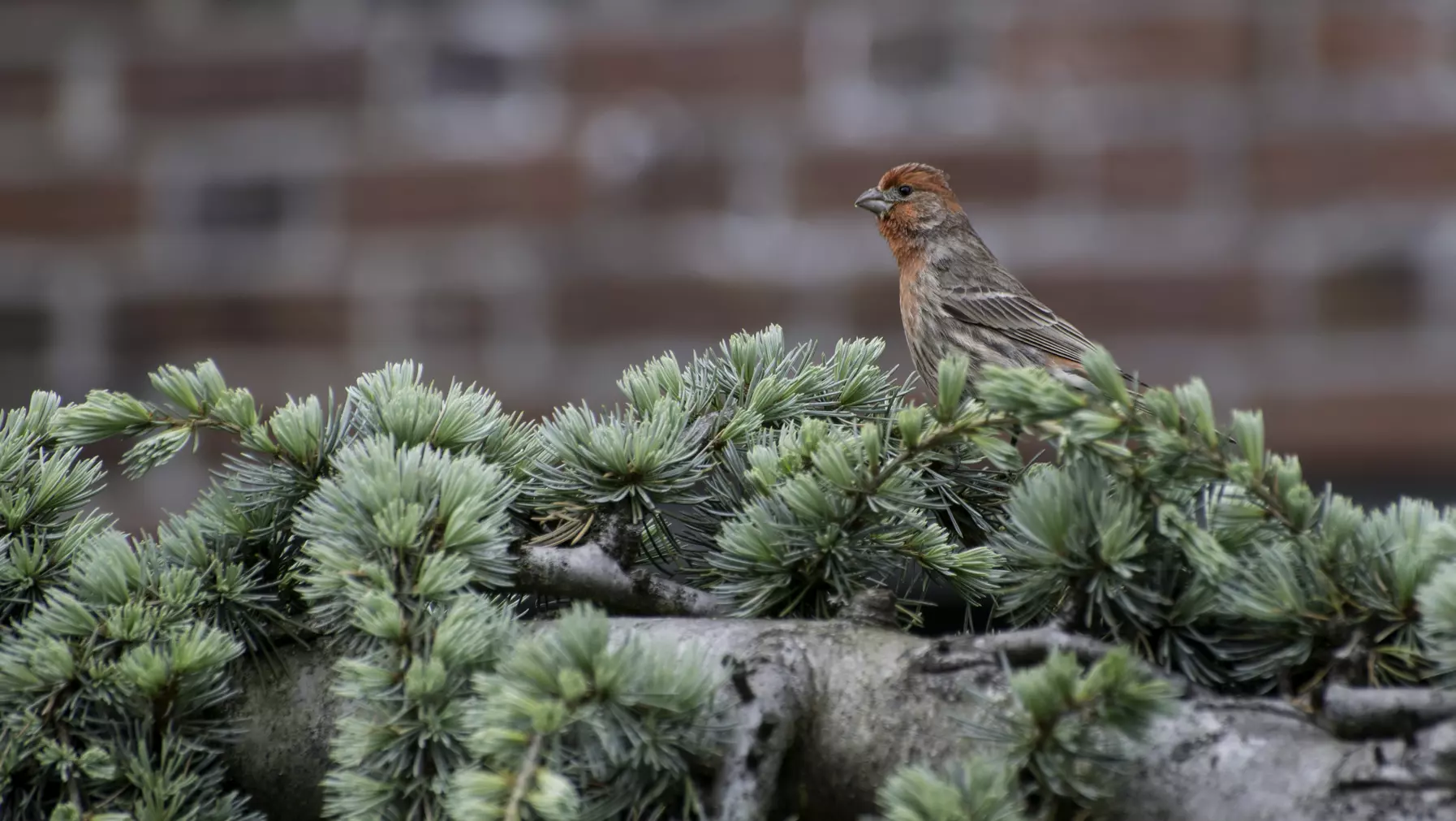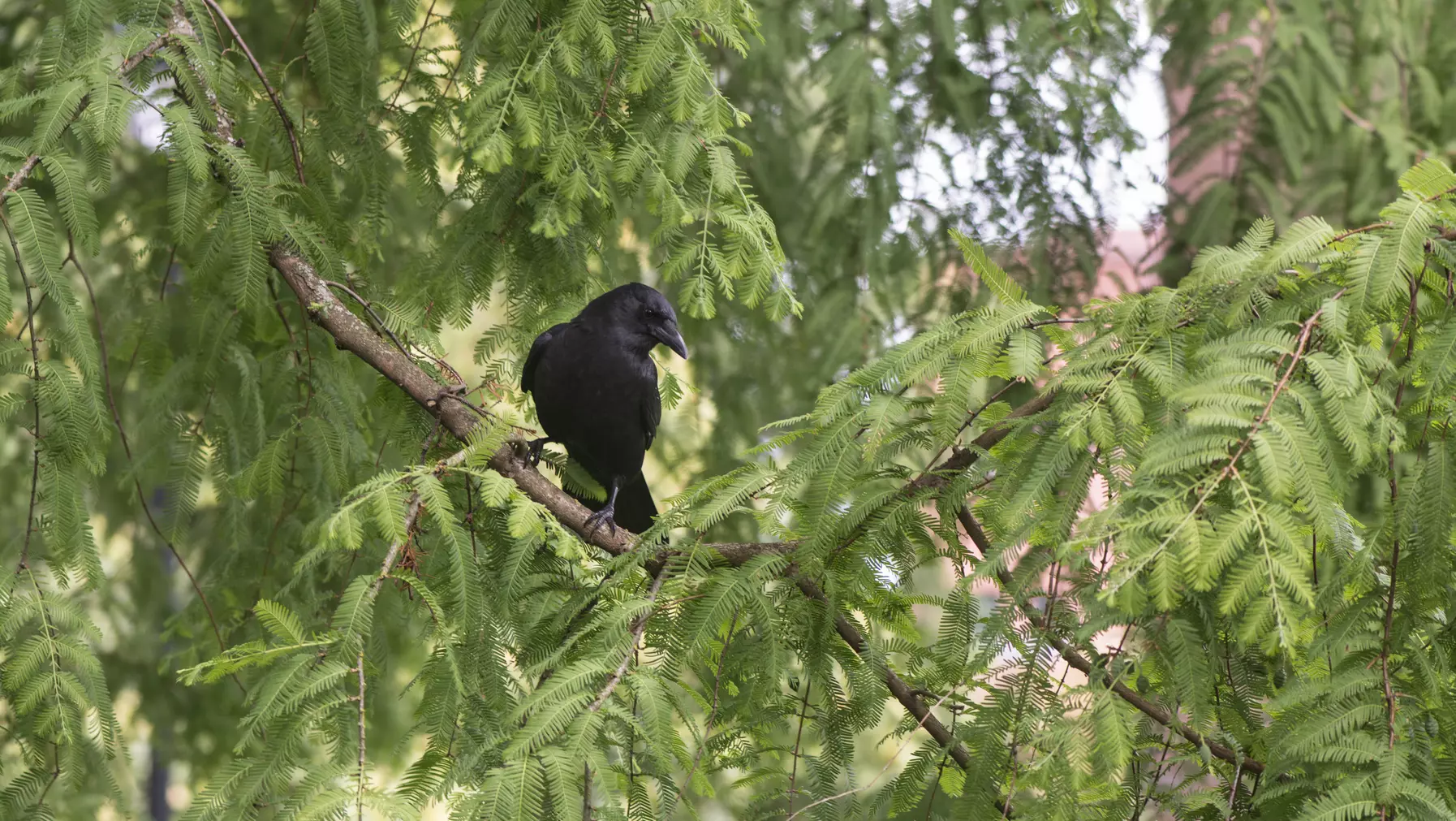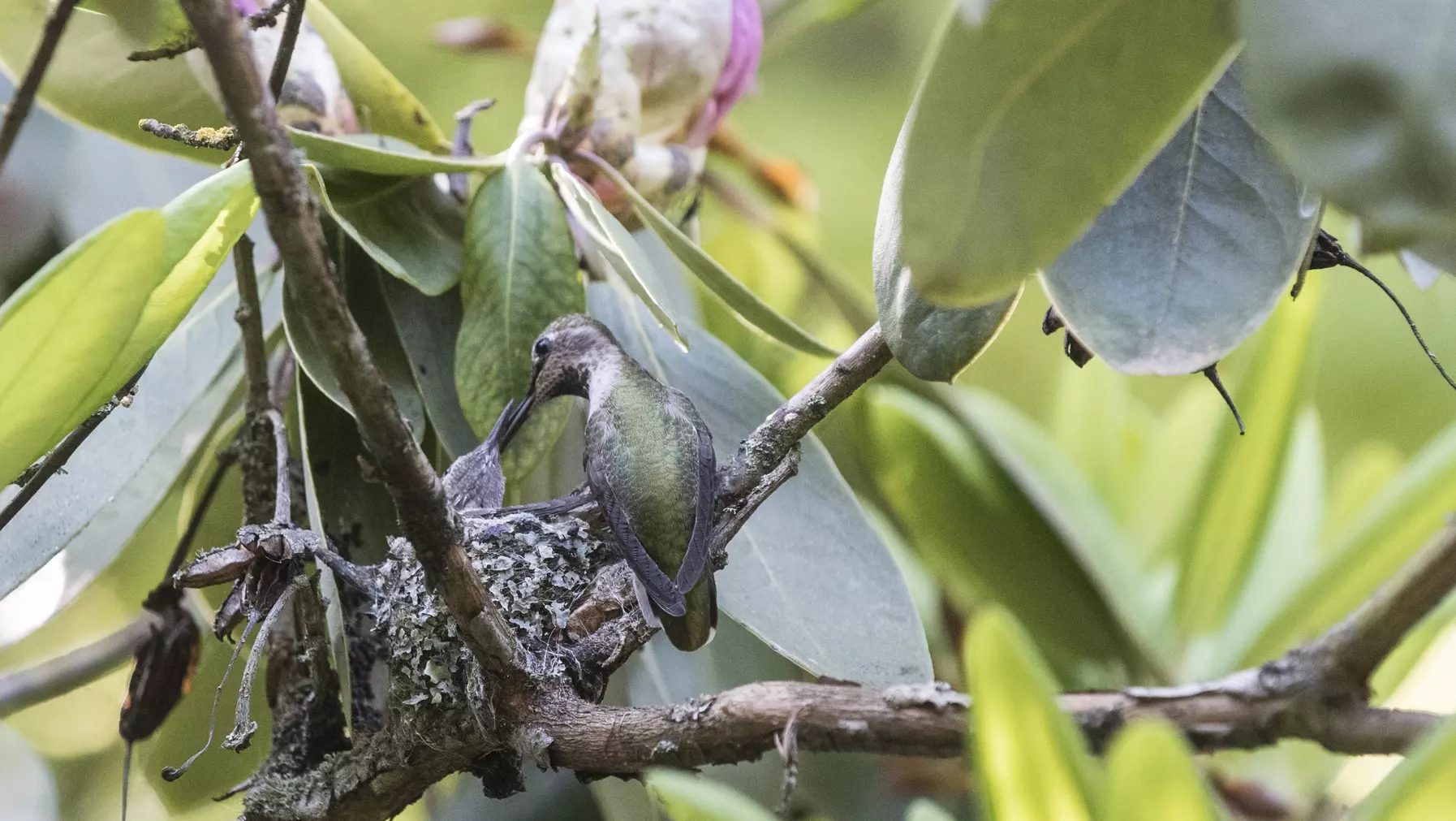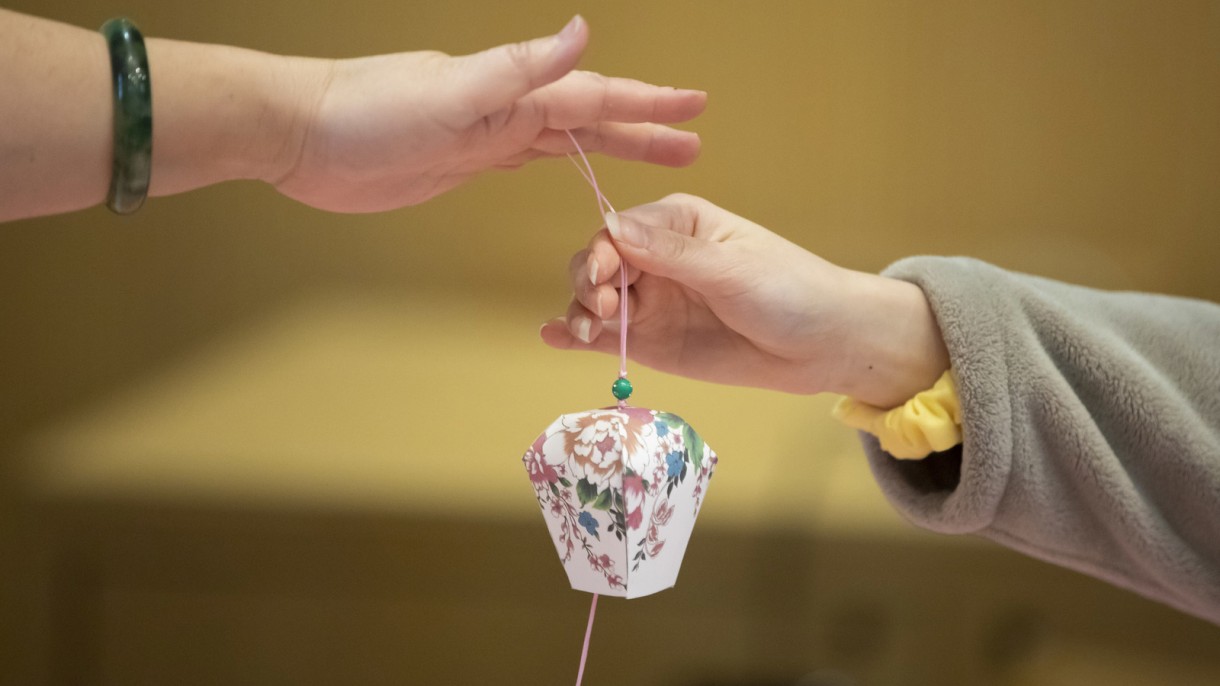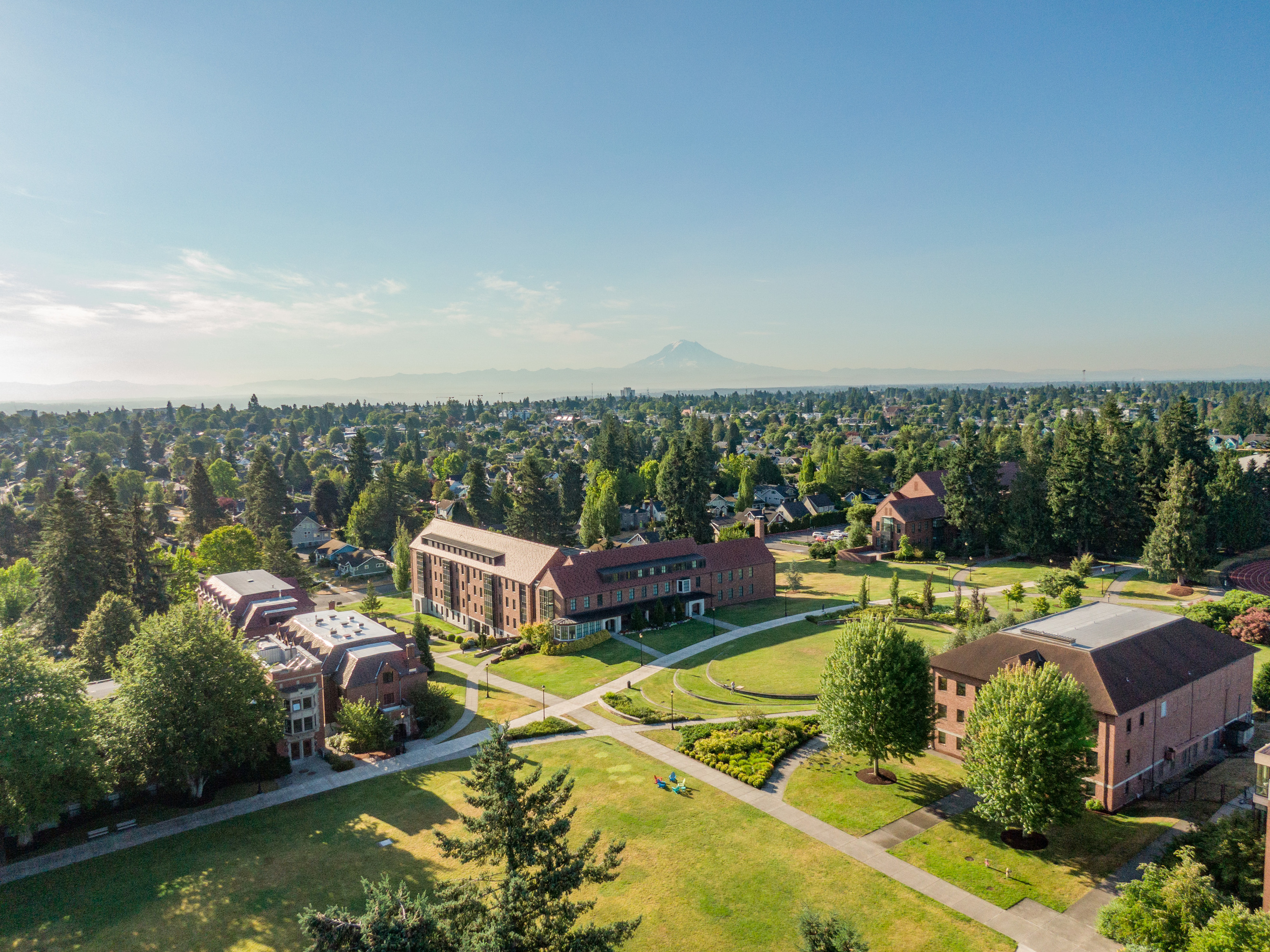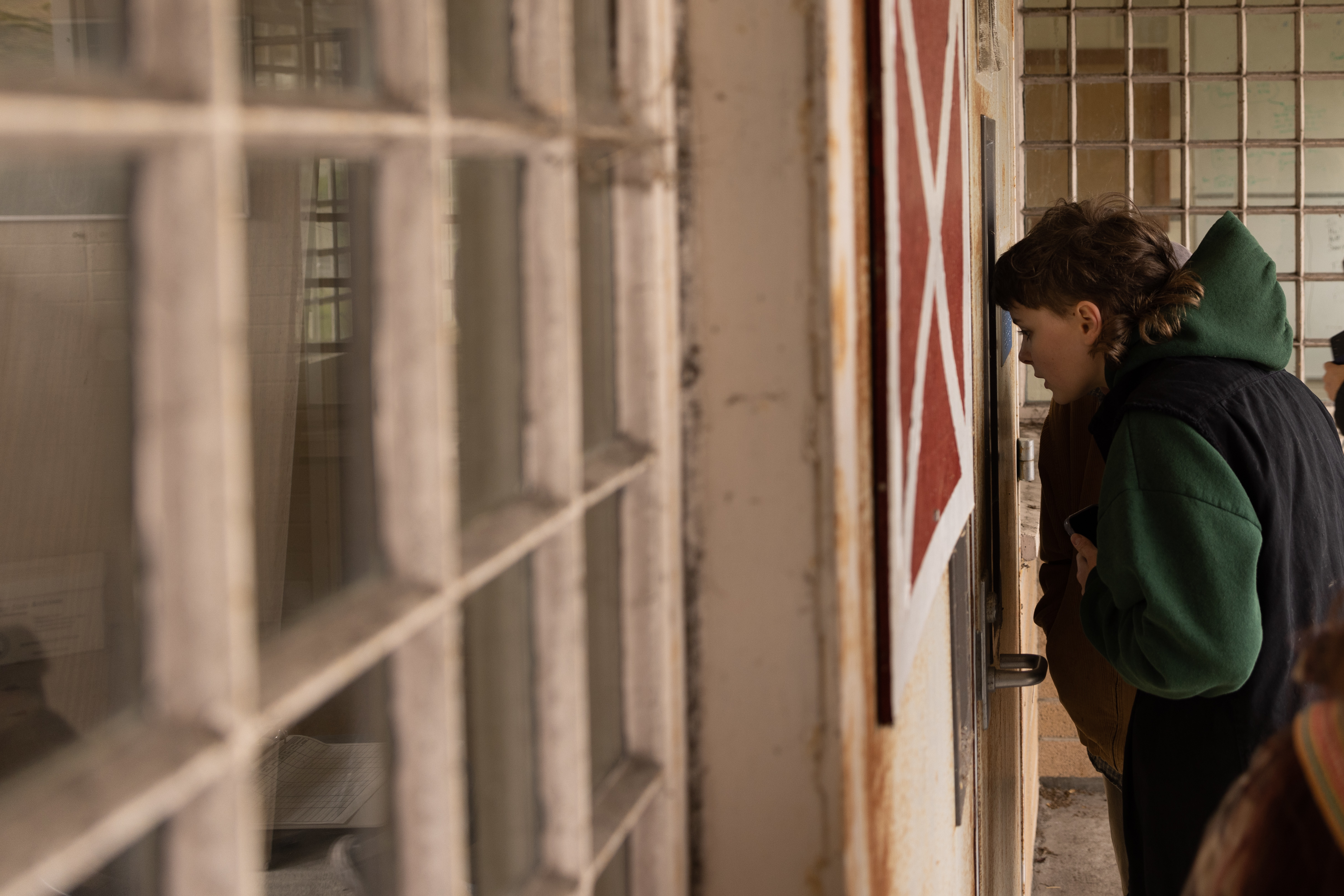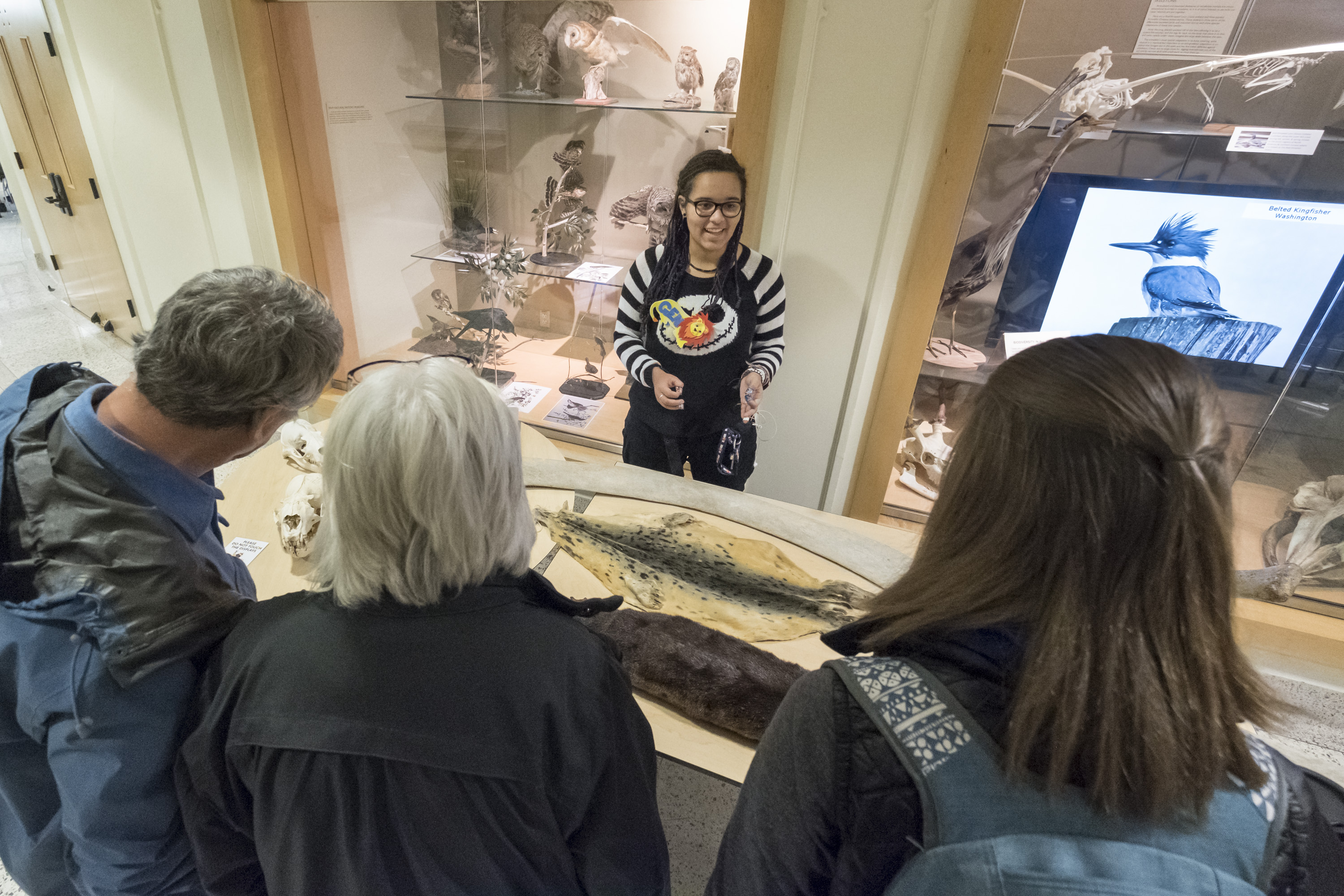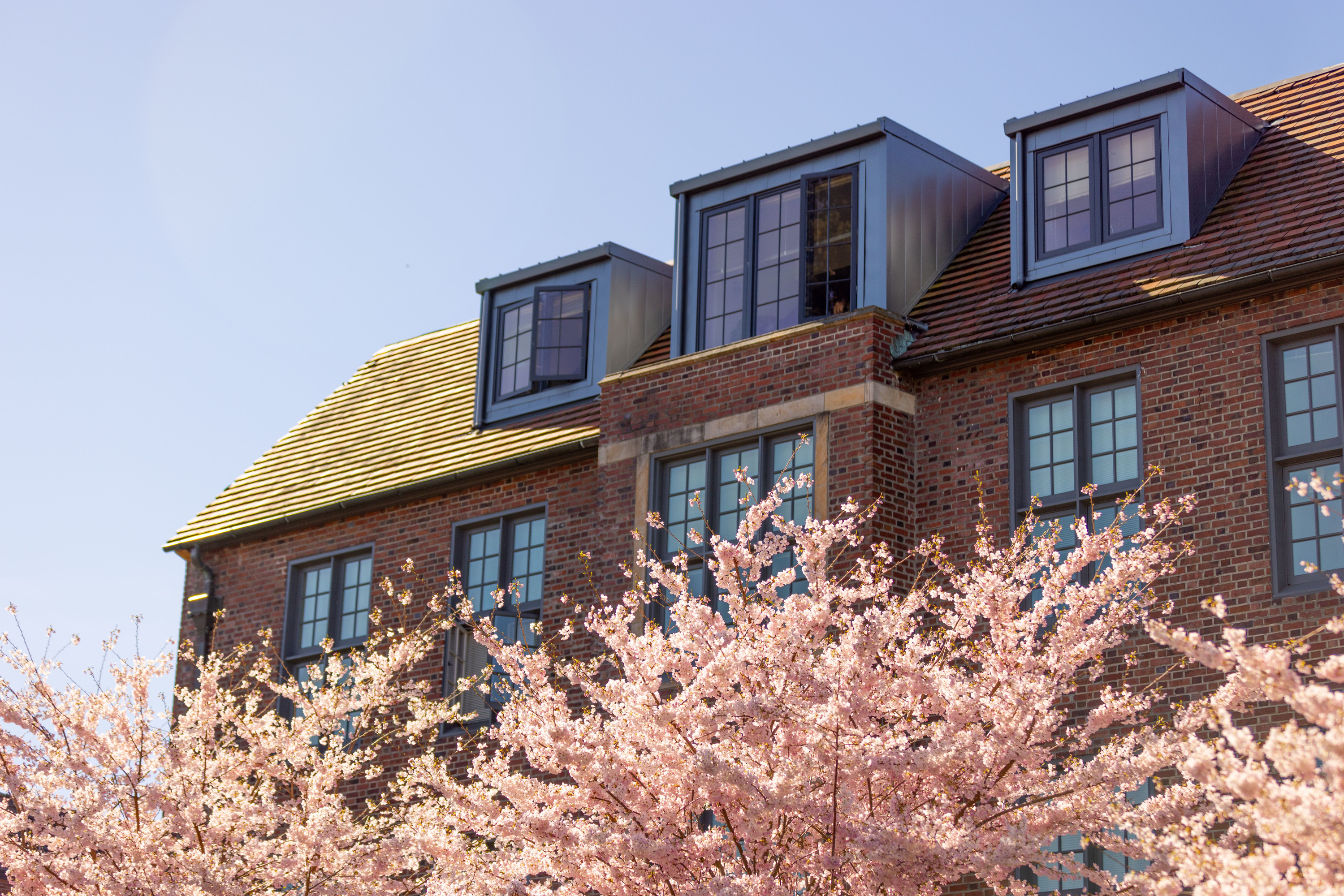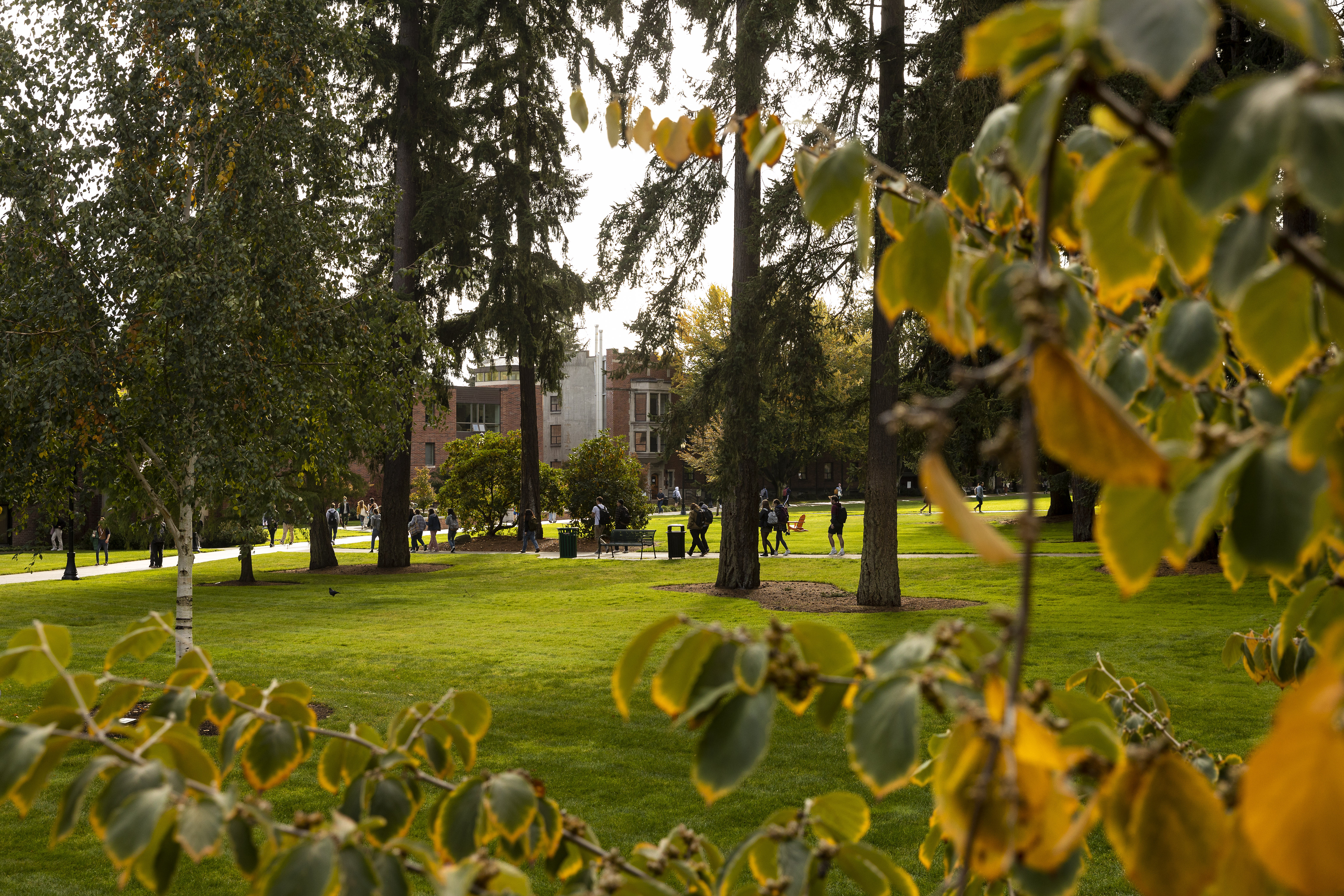One day last winter, walking through a grove of campus trees, Will Brooks ’20 encountered a bohemian waxwing.
Rare in Western Washington, this larger cousin to the more common cedar waxwing experienced an "irruption" last year, which, Will explains, is when a species expands into an area where it normally isn’t found. “I didn’t even see the bird, but I heard it—which still counts,” he says earnestly.
The college’s resident birder and a budding evolutionary biologist, Will is the leader of weekly bird walks on the Puget Sound campus. His walks draw five or 10 birding “regulars,” often students or staff members and a neighbor or two, who traverse the lawns and woods with eyes—and ears—alert.
“If you see a group of people with binoculars, that’s probably us,” he says.
